
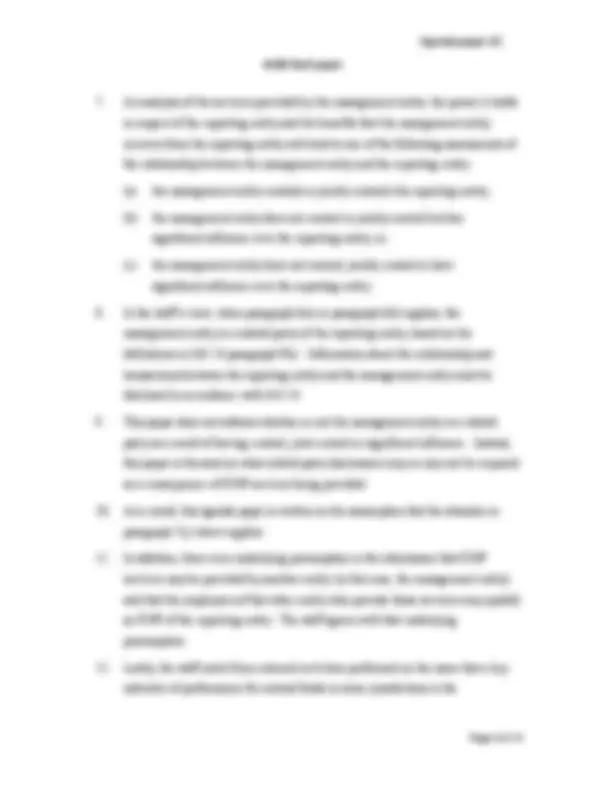

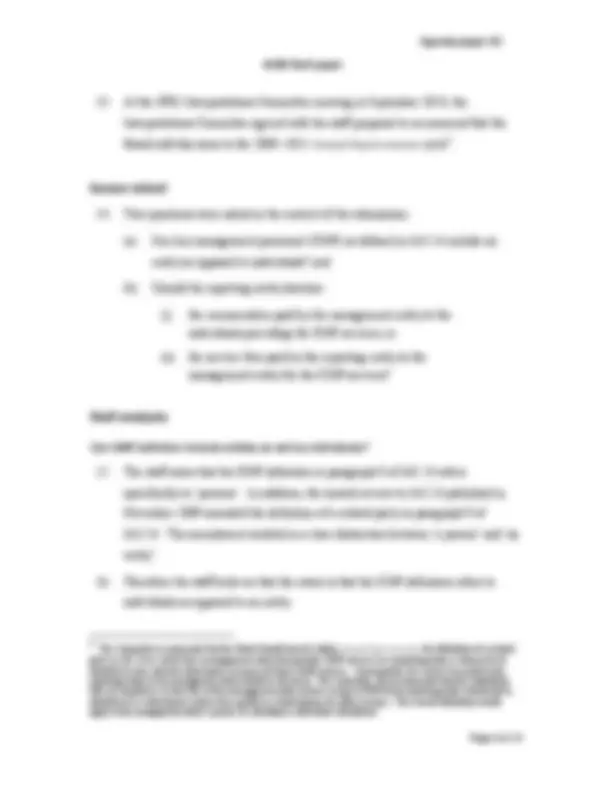
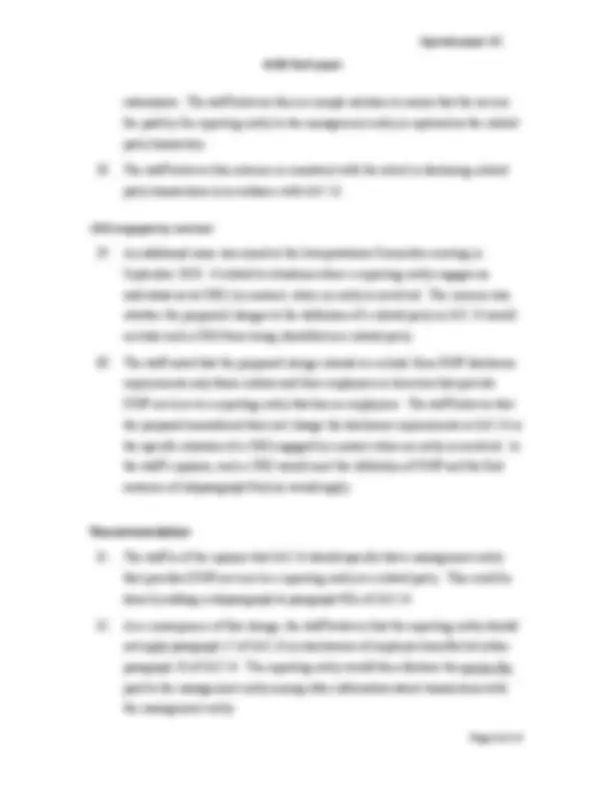
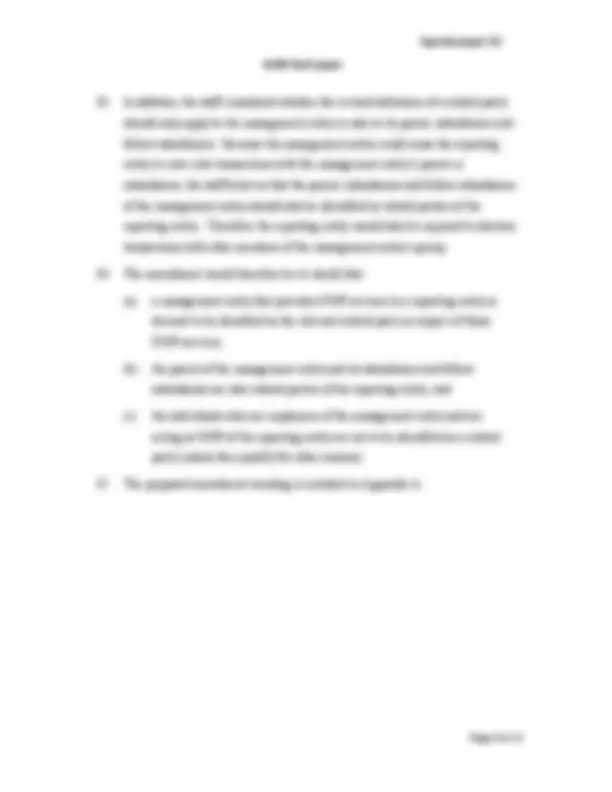
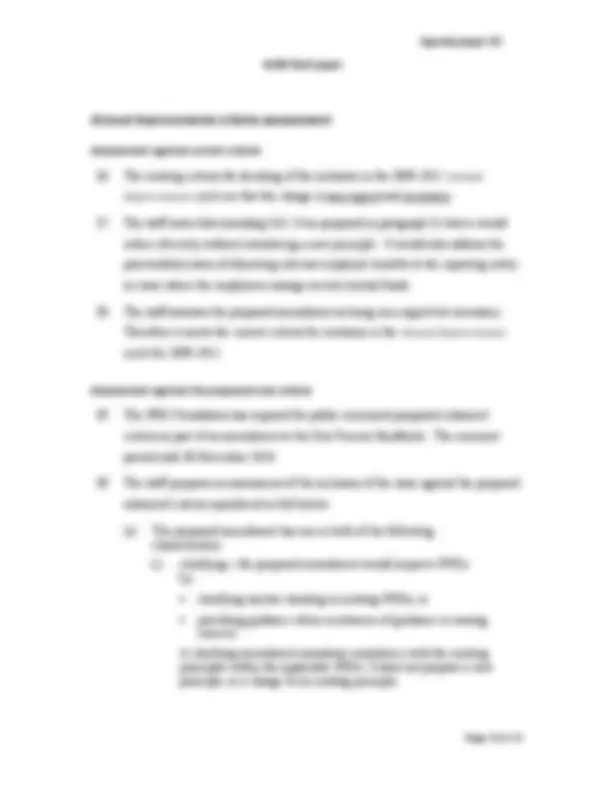
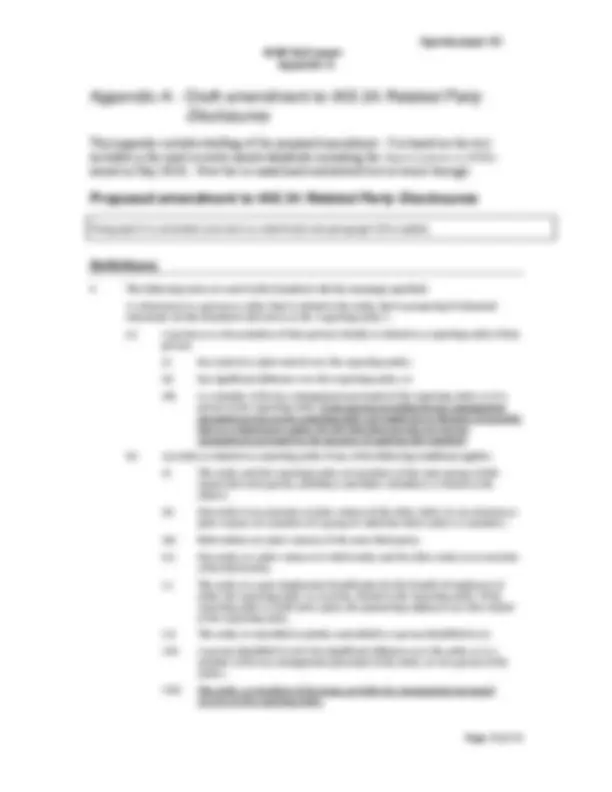
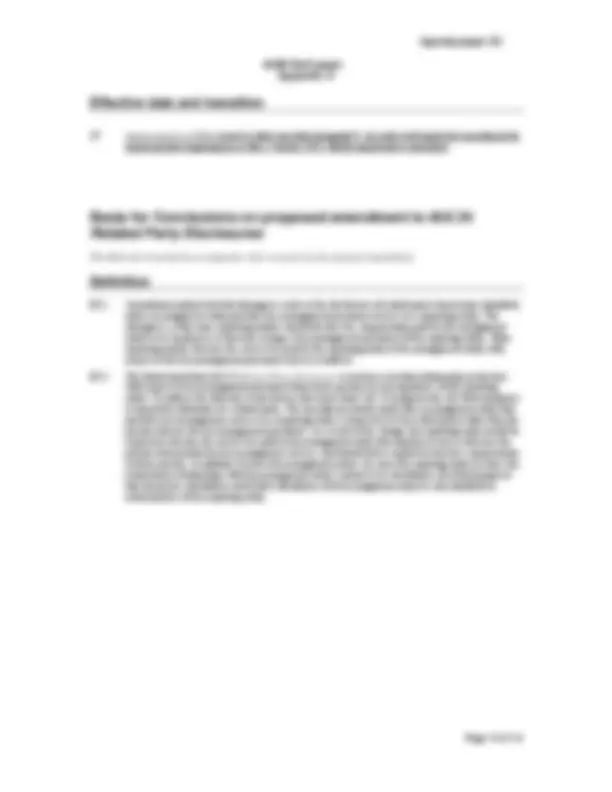


Study with the several resources on Docsity

Earn points by helping other students or get them with a premium plan


Prepare for your exams
Study with the several resources on Docsity

Earn points to download
Earn points by helping other students or get them with a premium plan
Community
Ask the community for help and clear up your study doubts
Discover the best universities in your country according to Docsity users
Free resources
Download our free guides on studying techniques, anxiety management strategies, and thesis advice from Docsity tutors
A request for clarification on disclosure requirements for a reporting entity that hires key management services from a separate management entity. the definition of key management personnel (KMP) and whether an entity or individuals can be considered KMP. It also addresses the question of whether the reporting entity should disclose the remuneration paid to individuals providing KMP services or the service fees paid to the management entity. The International Accounting Standards Board (IASB) staff provides an analysis and recommends amendments to IAS 24 to clarify the disclosure requirements.
What you will learn
Typology: Slides
1 / 14

This page cannot be seen from the preview
Don't miss anything!









IASB Meeting Agenda reference^ 3C
Project Annual Improvements – 2009–2011 cycle
Topic
IAS 24 Related Party Disclosures – Key Management Personnel
Please note this paper was previously distributed for the September 2010 IASB meeting
Introduction
Purpose of this paper
This paper has been prepared by the technical staff of the IFRS Foundation for discussion at a public meeting of theIASB. The views expressed in this paper are those of the staff preparing the paper. They do not purport to represent the viewsof any individual members of the IASB. Comments made in relation to the application of an IFRS do not purport to be acceptable or unacceptable application ofthat IFRS—only the IFRS Interpretations Committee or the IASB can make such a determination. The tentative decisions made by the IASB at its public meetings are reported in IASBthe IASB, including Discussion Papers, Exposure Drafts, IFRSs and Interpretations are published only after it has Update. Official pronouncements of completed its full due process, including appropriate public consultation and formal voting procedures.
IASB Staff paper
(b) makes a recommendation for (i) a proposed amendment to IAS 24 as presented in Appendix A, (ii) an assessment of the proposed amendment against the criteria for inclusion in Annual Improvements ; (c) asks the Board whether they agree with the recommendation.
Background information
IASB Staff paper
‘management expense’ ratio, which is a ratio of total expenses charged to the mutual fund by its management entity over the fair value of total assets.
IASB Staff paper
Issues raised
Staff analysis
Can KMP definition include entities as well as individuals?
(^1) The Committee recommends that the Board should amend, within Annual Improvements , the definition of a related party in IAS 24 to clarify that a management entity that provides KMP services to a reporting entity is deemed to be identified as the relevant related party in respect of those KMP services. Consequently, the service fees paid by thereporting entity to the management entity would be disclosed. The Committee also recommends that the individuals who are employees or directors of the management entity and are acting as KMP of the reporting entity should not be identified as a related party (unless they qualify as related parties for other reasons). The revised definition wouldapply to the management entity’s parent, its subsidiaries and fellow subsidiaries.
IASB Staff paper
Related party transactions disclosures and their interaction with KMP identified as a related party in the context of the submission
Need for identifying another related party in lieu of KMP?
IASB Staff paper
submission. The staff believes this is a simple solution to ensure that the service fee paid by the reporting entity to the management entity is captured as the related party transaction.
CEO engaged by contract
Recommendation
IASB Staff paper
Annual Improvements criteria assessment
Assessment against current criteria
Assessment against the proposed new criteria
IASB Staff paper
(ii) correcting—the proposed amendment would improve IFRSs by: resolving a conflict between existing requirements of IFRSs and providing a straightforward rationale for which existing requirement should be applied, or addressing an oversight or relatively minor unintended consequence of the existing requirements of IFRSs. A correcting amendment does not propose a new principle or a change to an existing principle, but may create an exception from an existing principle. (b) The proposed amendment has a narrow and well-defined purpose, ie the consequences of the proposed change have been considered sufficiently and identified. (c) It is probable that the IASB will reach conclusion on the issue on a timely basis. Inability to reach agreement on a timely basis may indicate that the cause of the issue is more fundamental than can be resolved within annual improvements. (d) If the proposed amendment would amend IFRSs that are the subject of a current or planned IASB project, there must be a pressing need to make the amendment sooner than the project would.
IASB Staff paper Appendix A
This appendix includes drafting of the proposed amendment. It is based on the text included in the most recently issued standards (including the Improvements to IFRSs issued in May 2010). New text is underlined and deleted text is struck through.
Paragraph 9 is amended (new text is underlined) and paragraph 29 is added.
9 The following terms are used in this Standard with the meanings specified: A related party is a person or entity that is related to the entity that is preparing its financial statements (in this Standard referred to as the ‘reporting entity’). (a) A person or a close member of that person’s family is related to a reporting entity if that person: (i) has control or joint control over the reporting entity; (ii) has significant influence over the reporting entity; or (iii) is a member of the key management personnel of the reporting entity or of a parent of the reporting entity. If the persons providing the key management personnel services to the reporting entity are employees or directors of an entity that is a related party under (b)(viii) then those persons are not key management personnel for the purposes of applying this standard. (b) An entity is related to a reporting entity if any of the following conditions applies: (i) The entity and the reporting entity are members of the same group (which means that each parent, subsidiary and fellow subsidiary is related to the others). (ii) One entity is an associate or joint venture of the other entity (or an associate or joint venture of a member of a group of which the other entity is a member). (iii) Both entities are joint ventures of the same third party. (iv) One entity is a joint venture of a third entity and the other entity is an associate of the third entity. (v) The entity is a post-employment benefit plan for the benefit of employees of either the reporting entity or an entity related to the reporting entity. If the reporting entity is itself such a plan, the sponsoring employers are also related to the reporting entity. (vi) The entity is controlled or jointly controlled by a person identified in (a). (vii) A person identified in (a)(i) has significant influence over the entity or is a member of the key management personnel of the entity (or of a parent of the entity). (viii) The entity, or members of its group, provides key management personnel services to the reporting entity.
IASB Staff paper Appendix A
29 Improvements to IFRSs issued in [date] amended paragraph 9. An entity shall apply this amendment for annual periods beginning on or after 1 January 2012. Earlier application is permitted.
Basis for Conclusions on proposed amendment to IAS 24 Related Party Disclosures This Basis for Conclusions accompanies, but is not part of, the proposed amendment.
BC1 Constituents pointed out that divergence exists in the disclosures of related party transactions identified when a management entity provides key management personnel services to a reporting entity. The divergence is that some reporting entities would disclose the compensation paid by the management entity to its employees or directors acting as key management personnel of the reporting entity. Other reporting entities disclose the service fee paid by the reporting entity to the management entity with respect to the key management personnel services rendered. BC2 The Board noted that IAS 24with respect to key management personnel when those persons are not employees of the reporting Related Party Disclosures is unclear as to what information to disclose entity. To address the diversity in disclosures that arises from IAS 24 being unclear, the Board proposes to amend the definition of a related party. The amendment would clarify that a management entity that provides key management services to a reporting entity is deemed to be the related party rather than the persons that are the key management personnel. As a result of the change, the reporting entity would be required to disclose the service fee paid to the management entity that employs or has as directors the persons that provide the key management services, and would not be required to disclose compensation to those persons. In addition, because the management entity can cause the reporting entity to enter into related party relationships with the management entity’s parent or its subsidiaries, the Board proposes that the parent, subsidiaries and fellow subsidiaries of the management entity be also identified as related parties of the reporting entity.